The morning started out similarly to most other mornings on the trip. We all woke up gradually and made our way into the common room to have breakfast. Cereal and toast – simple items and yet they never get old. We each pulled out our computers and worked as the morning progressed.
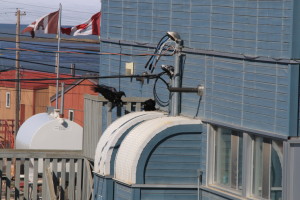
We still had two more full days in Kugluktuk after today, but even though we had explored most areas around town, we all wanted to get out and go for a hike.
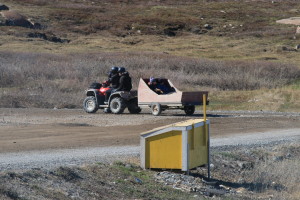
After another filling lunch, Rob made for the door. I did not want to miss my opportunity for a hike today, so I grabbed my bag and laced up my hiking boots. Greg decided to join us too. Matt stayed behind to watch the second half of the World Cup game.
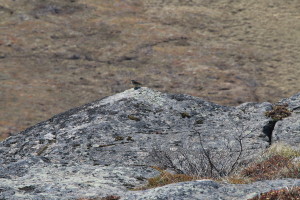
We set out in hopes of finding the stromatolite we had found a couple days earlier. We first climbed the other hill that rises to the west of town. We descended on the opposite side of the hill and traversed across the soft tundra between the two exposed rock faces. A species of gull caught an updraft of wind and hovered confidently above our heads as we set food on the new rock cliff.
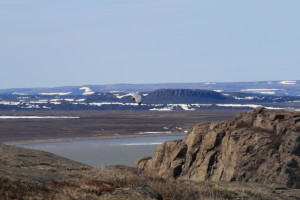
We wandered around the spot where we thought we had seen the stromatolite earlier this week, but we could not find it. In the distance I heard the distinctive call of a raven. On the valley floor below a raven was hopping carefully across the tundra.
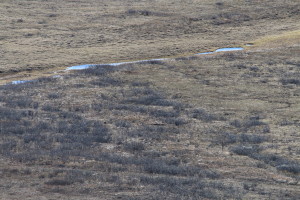
Overhead, a medium-sized brown bird repeatedly mobbed the raven below. Mobbing is a behavior seen in birds to protect their nest, mate, or hatchlings. The interesting thing to me is that in each situation I have observed mobbing behavior, a smaller bird has been attacking a much larger bird. I am not sure if this is a consistent pattern with all bird species, but regardless I watched closely. From what I could tell the raven was searching carefully for something on the ground, possibly a nest. Eventually the raven gave up and flew off. The smaller bird did not leave the raven’s retreat to chance. Instead, it provided an escort off of its premises and occasionally moved in close and plucked a few feathers from the raven. Nature can be a rough place to live…
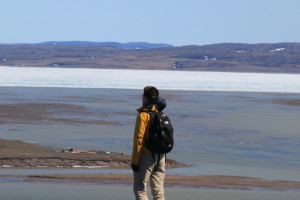
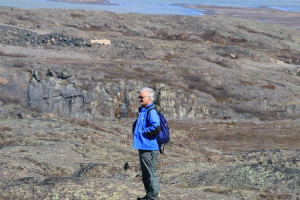
We continued toward the edge of the town past the pump station where the Coppermine River flows into Coronation Bay. As we made our way down to the water level we passed various species of flowers that had recently appeared on the hillside.
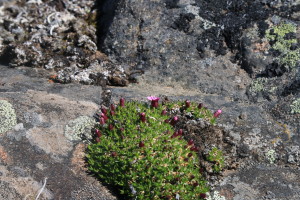
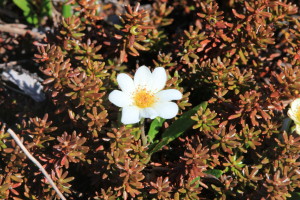
These small bursts of purple, yellow, and white were in stark opposition to the drab brown vegetation that served as their backdrop.
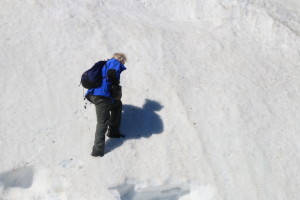
As we neared the easternmost point of the Kugluktuk, we noticed a series of crosses on the other side of the river. This was Kugluktuk’s older cemetery that can no longer be used. The existence of the cemetery, just like the people living in town, is being threatened by a changing climate.
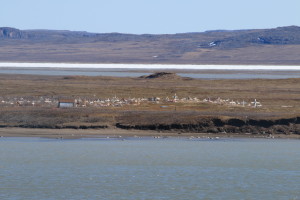
Years ago, the cooler weather each year kept the ground from thawing completely during the summer. In the Arctic, this is a big deal. Ice and permafrost help to hold the ground together to create a stable platform. It also minimizes erosion, which can claim large chunks of soil and land from the edge of a river. As the ground has thawed the bank has become more eroded each year. What is the result? Several graves are only a few feet from becoming uncovered. Although there has been a new cemetery started in more stable part of town, the thought that climate change has the potential to reach beyond the grave speaks to the unexpected consequences we have yet to witness from this global issue.
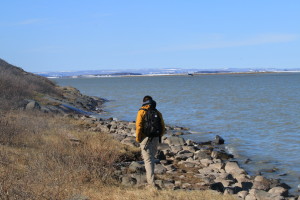
At the river’s edge the rocks had been smoothed dramatically compared to the same rocks higher up. All of the ice on the shore was gone. We trekked along the water’s edge back around to town. We spent the rest of the day inside, enjoying the seemingly endless supply of coffee. I went to bed early, looking forward to getting an early start in the morning.
